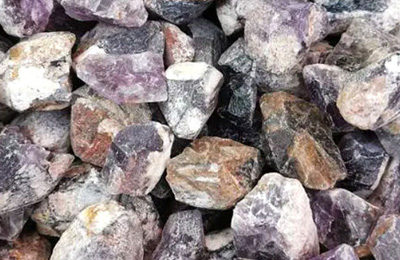Silica sand and quartz sand are terms that are often used interchangeably, but they actually refer to distinct types of sand with different properties and compositions. While they share some similarities, understanding their differences is important in various industries, including construction, glass manufacturing, and foundries. In this explanation, we will explore the disparities between silica sand and quartz sand.
 Silica sand is a type of sand that is composed primarily of silicon dioxide (SiO2). It is found in abundance in nature and is commonly extracted from sandstone formations. Silica sand is known for its high purity and is often used in industrial applications where quality and consistency are crucial. It is widely used in the production of glass, ceramics, molds, and abrasives.
Silica sand is a type of sand that is composed primarily of silicon dioxide (SiO2). It is found in abundance in nature and is commonly extracted from sandstone formations. Silica sand is known for its high purity and is often used in industrial applications where quality and consistency are crucial. It is widely used in the production of glass, ceramics, molds, and abrasives.
On the other hand, quartz sand refers to sand that is primarily composed of quartz crystals. Quartz is a mineral that consists of silicon and oxygen atoms, and it is one of the most abundant minerals on Earth. Quartz sand is often found as a component of beach sand and riverbeds. It has a similar composition to silica sand, as both are predominantly made up of silicon dioxide. However, quartz sand can contain a higher percentage of impurities compared to silica sand.
One of the key differences between silica sand and quartz sand lies in their geological origins. Silica sand is typically derived from quartz-rich sandstone, while quartz sand is directly derived from quartz crystals through weathering and erosion processes. This distinction results in differences in the size, shape, and purity of the grains.
Silica sand tends to have more rounded grains due to the transport and erosion processes it undergoes. These rounded grains are desirable in applications such as filtration and glass manufacturing, where uniformity and smoothness are important. In contrast, quartz sand grains have a more angular and irregular shape due to their direct origin from quartz crystals. This shape can be advantageous in some applications, such as abrasive blasting and traction.
In terms of purity, silica sand generally has a higher purity level than quartz sand. Silica sand is often subjected to additional processing, such as washing, sieving, and magnetic separation, to remove impurities like clay, minerals, and organic matter. Quartz sand, although it can also be refined, tends to have a higher presence of impurities, which may include iron oxide, feldspar, mica, and other minerals. These impurities can affect the performance of the sand in certain applications, such as glassmaking, where high purity is essential.
The different properties of silica sand and quartz sand make them suitable for distinct applications. Silica sand’s high purity and round grains make it ideal for use in glass production, where it is a key ingredient. Its uniform particle size distribution also makes it suitable for water filtration, foundry molds, and abrasive blasting. Quartz sand, with its angular grains, is commonly used in construction materials such as concrete and mortar. Its abrasive properties also make it useful in sandblasting, where it is used to remove paint or rust from surfaces. Additionally, quartz sand is utilized in the oil and gas industry for hydraulic fracturing, or “fracking,” as a proppant to keep fractures open in underground rock formations.
